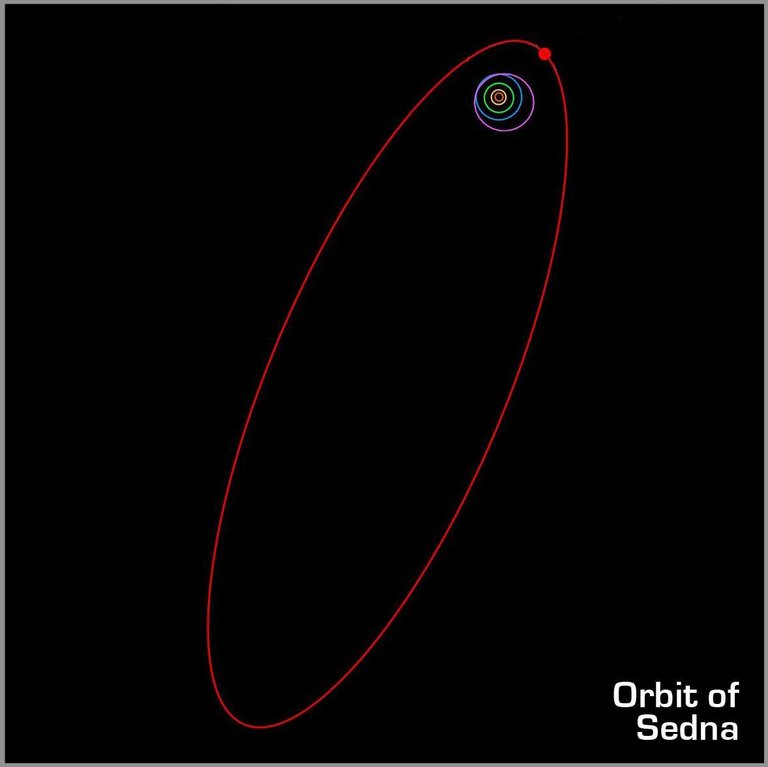Sedna

Source
Sedna is a dwarf planet that lies at the edge of our solar system, beyond the orbit of Neptune. It was discovered in 2003 by a team of astronomers led by Mike Brown, Chad Trujillo and David Rabinowitz.
This distant little world is remarkable for several reasons. First, its orbit is extremely eccentric, meaning that its path around the Sun is highly elliptical. It takes approximately 11,400 years to complete one lap around our star.
Sedna is also known for its extreme distance from the Sun. At its farthest point, known as aphelion, it is a staggering 937 astronomical units (AU) away from the Sun.

Source
To put this into perspective, one astronomical unit is equivalent to the average distance between the Earth and the Sun, which is approximately 150 million kilometres. Imagine how far away Sedna is!
In terms of size, Sedna has an estimated diameter of around 1 000 kilometres, making it one of the largest objects in the Kuiper Belt, a region of the solar system beyond Neptune's orbit that is populated by numerous icy bodies.

Source
Sedna's composition remains largely unknown, but it is believed to be composed mainly of ice and rocks. Its surface is probably reddish in colour due to the presence of organic compounds that have been modified by solar radiation.
Although Sedna remains an enigmatic and little-known object, its discovery has raised fascinating questions about the formation and evolution of our solar system. Its existence challenges our previous ideas about the distribution and dynamics of objects beyond Neptune.
0
0
0.000
0 comments